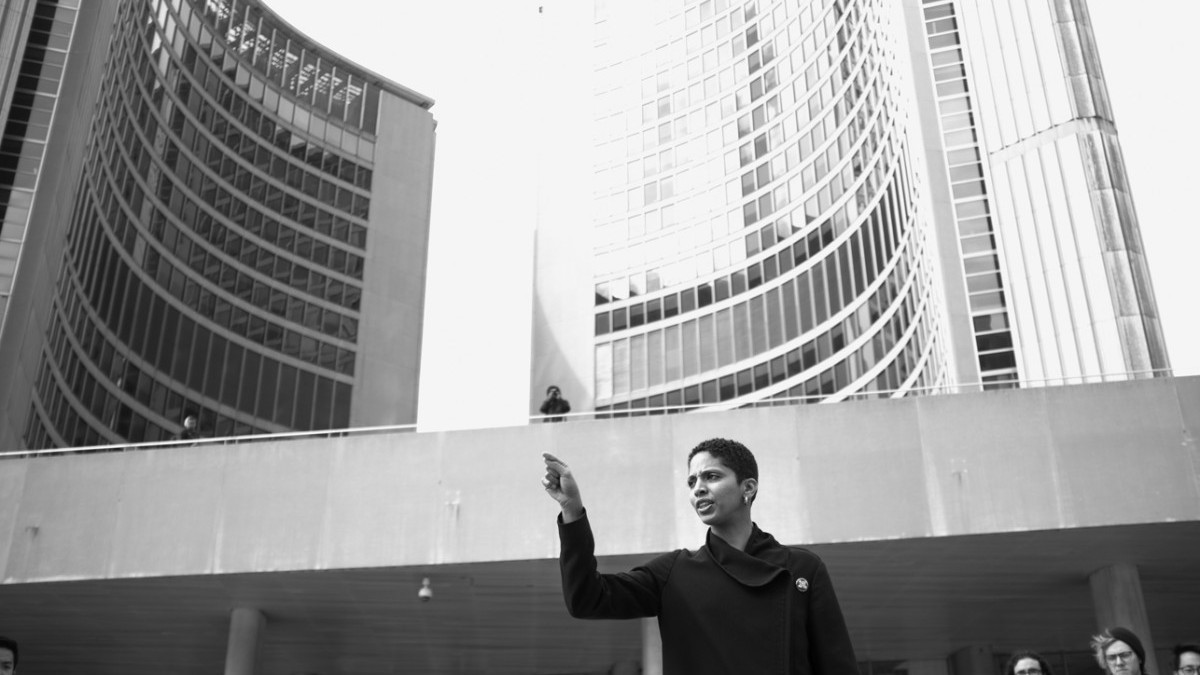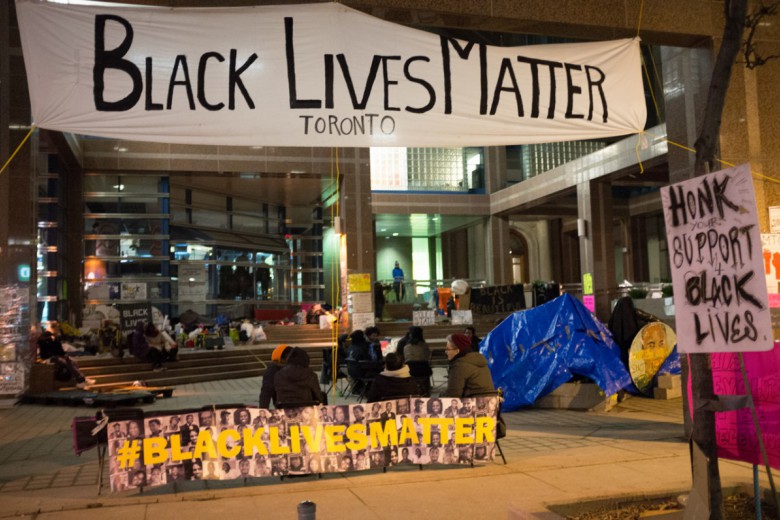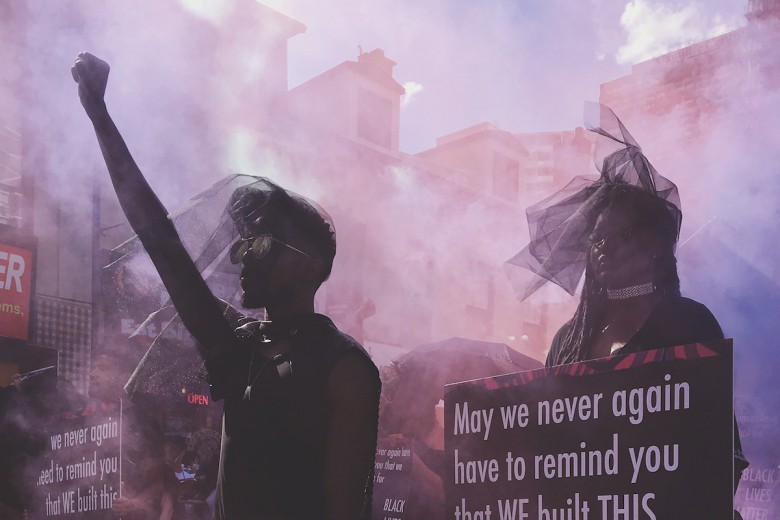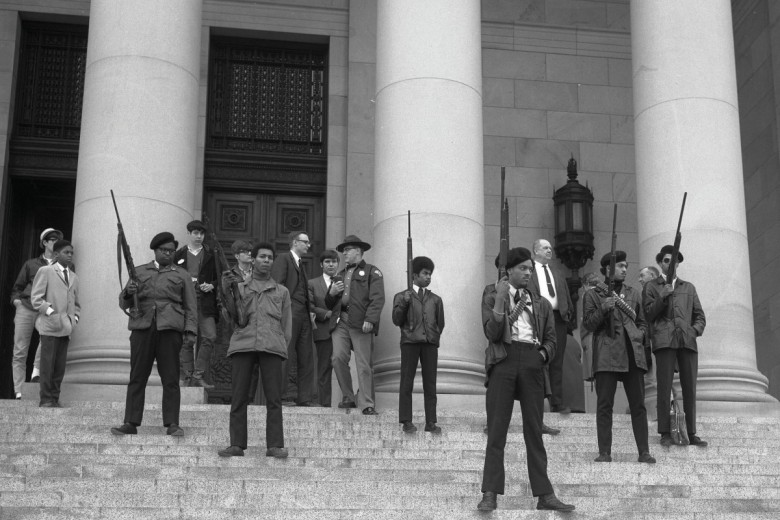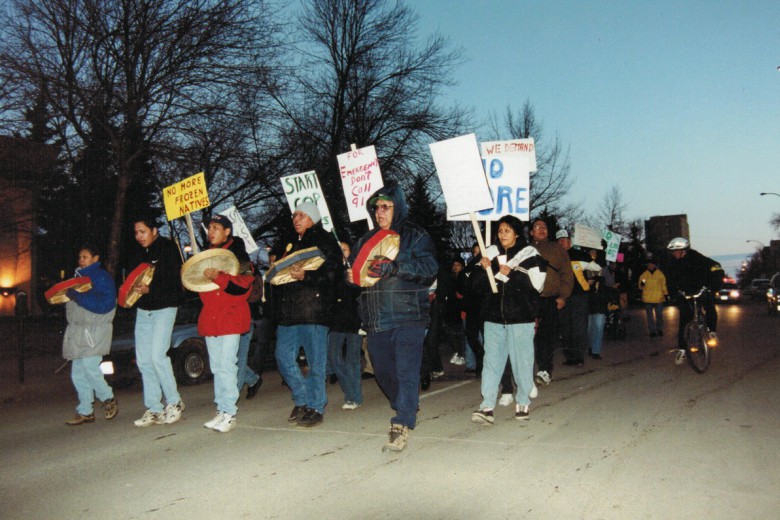This is part 2 of a two-part interview with members of the Black Lives Matter Toronto steering committee. Read part 1 here, in which Janaya Khan and LeRoi Newbold discuss the achievements of their actions, where the group is now, and developments in Black and Indigenous solidarity.
Following devastating news for the Black community in Toronto in March, the group Black Lives Matter Toronto (BLMTO) set up an occupation outside Toronto Police Headquarters for two weeks and held a series of direct actions during that time.
I caught up with two participants in what became known as BLMTO – BLACKCITY or BLMTOtentcity, Janaya Khan and LeRoi Newbold, who are also on the BLMTO steering committee. Khan acts as International Ambassador for the Black Lives Matter network.
Black Lives Matter Toronto, from what I’ve seen, places a lot of importance on its gender analysis and on being inclusive of those with disabilities, whether that’s during press conferences, in chants, or in actions. How did the group arrive at that analysis and how is it maintained in practice?
LN: Well, BLMTO is one of 28 chapters of Black Lives Matter spread around the United States and internationally. The Black Lives Matter movement itself is founded by queer Black women. And the leadership of queer and transgender people within Black Lives Matter is something that can be noted within every chapter, and BLMTO is no different. Our steering committee is composed exclusively of queer and trans people and women, Black women. This movement is a crossroads. This is who is meant to be in leadership of the movement at this time in history. And it will be a crossroads in terms of looking at misogynoir, in looking at the ways women have been ignored in conversations around incarceration of Black communities, looking at the ways that women have been ignored in terms of conversations around violent policing. We are looking at the ways Black trans women are disproportionally the targets of police violence, especially sex-working Black trans women. For us, it is important to look at that intersectionality and always bring it back to the experiences of those who are most vulnerable in our communities because we know it is the experiences of those who are most marginalized that change the reality for everybody.
JK: Part of the reason why we’ve made it so is [that] we recognize these are also the populations of people who have the best tools to do the kinds of transformative organizing that we want to.
When we talk about living in a place that is anti-police, and that the police aren’t the only way to deal with violence in our communities that we live in, what better populations to look to than sex-working people and people with no [immigration] status? They can’t call the police when something happens to them. So they have to develop and create entire safety networks that exist and have always existed despite the reality of the police, who are not invested in their health and well-being and their protection, are not there to serve, but who actively antagonize and criminalize and brutalize, which is intersectional with our experiences of police officers as Black folks.
So we really wanted to uplift and empower those experiences and those narratives. We don’t need to reinvent the wheel.
We have a decentralized narrative and movement. There is not one face of Black Lives Matter Toronto. We are deeply, deeply invested in that. We have conversations about social location to ensure that we are balanced.
We have ASL [American Sign Language] interpretation and accessible venues at just about every action that we have, every event that we have, and when we cannot secure that, we are transparent and offer alternatives, whether it’s closed-captioned or being livestreamed. We are invested in that.
I think it’s understanding that at the heart of it, it’s all of us or none of us. We believe it. We genuinely believe it when we say it. And we have a deep, deep commitment to this reality. When the most marginalized have what they need, we all have what we need.
So when you have a movement like Black Lives Matter, it’s not enough to just be Black. The movement is so much bigger than that. It’s uplifting our intersectional identities and in doing so, making connections with so many other people who have those experiences. So we are deeply invested in liberatory narrative around gender and sexuality, around disability justice, around sex workers.
I mean, it was sex-working economies that allowed the occupation to happen as quickly as it did. Who better to reach out to for large sums of cash on hand to get an occupation going before the police can shut it down than sex workers? And they were really, really amazing about mobilizing around us very quickly and recognizing that our struggles are interconnected.
So, it would also be dishonest to suggest that it is not those folks with those intersecting identities, myself included, who have not been at the vanguard, whether or not we were recognized. And we will continue to be so.
Thanks for that. You mentioned the international nature of BLM. How does the Toronto location of this action make you think about BLM’s international strategy and connections?
JK: The person that we rallied behind and for was Andrew Loku, during our occupation. It wouldn’t be an accurate narrative or truth the way it needs to be if we just said he was a Black man who was killed at the hand of the state. He was a 45-year-old Sudanese man who had been through 16 years of civil war, was a child soldier, came here, got his college education and supported his five children back home, only to be killed at the hands of the state within seconds of seeing him, even with knowledge of different mental health struggles that he had. We were rallying around a man with an immigrant experience who comes from the continent, and that matters. It matters because that is the experience of so many people there.
So when you have a Brazilian band like Baque de Bamba who came in and supported us, Afro-Brazilians who were there … right now Brazil is very politically charged and there is a growing Black consciousness movement there. Brazil has the largest amount of African-identified people outside of the continent of Africa itself. So these implications of what we’re doing are greater.
And because of Canada’s lack of space and a different history of resistance, you can be five generations deep and still identify with your Caribbean and diasporic African roots, because there is not a Canadian identity that allows for your racialized experience. Rather, it is erasive of it.
We know that, in so many ways, Toronto represents a small look at what globalized building can look like and organizing can look like when we’re all in the same space and when we’re on the ground.
In Toronto, you can’t just organize around a particular identity without also considering the histories and the experience of what is happening on the continent.
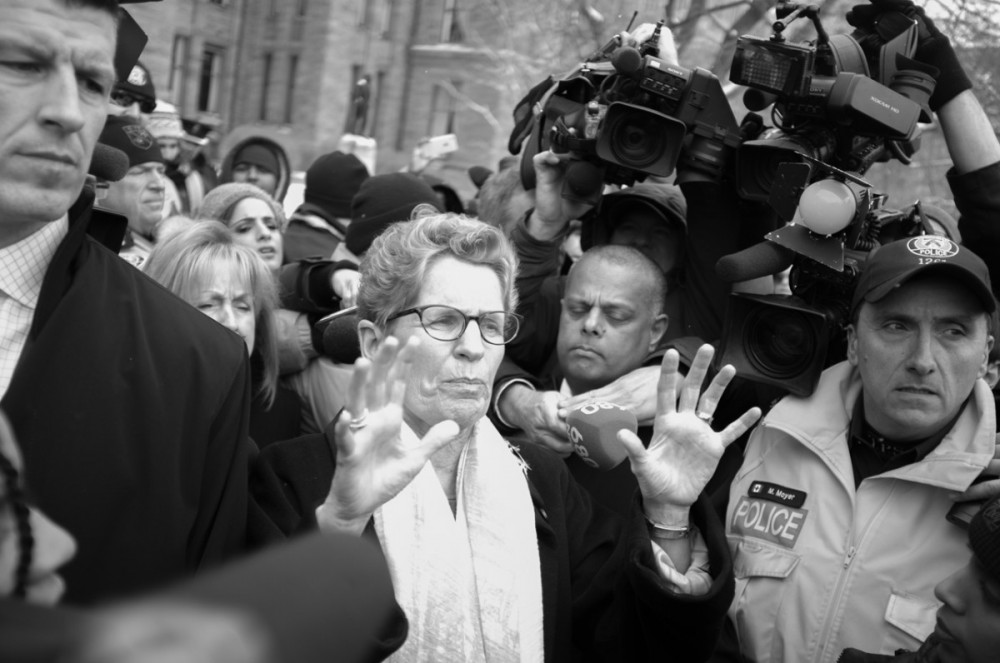
My team is not all born in Toronto, and we’re not all born in Canada. You know, Haitian and Bermudian and, at another time, Trinidadian, and we had an organizer from Zimbabwe who was on our steering committee. To organize around Black identity only would not have fully encompassed what our intersecting identities are. We recognize too that liberation is something that is larger than ourselves.
We’re not nationalists and we don’t have a nationalistic narrative. It doesn’t actually make sense for us and isn’t even part of how we understand organizing. I think what makes Toronto global is that people from everywhere in the world are there and we have come together with an understanding that we bring our homes and our places of origin with us anywhere that we are. That informs our resistance.
Jamaica has its own histories of resistance in Maroon populations. And Eritreans have entire histories of resistance if you’re looking at the EPLF (Eritrean People’s Liberation Front) as only one example. So we’re coming from many histories of resistance that we’re deeply, deeply connected to and committed to.
Bringing that together makes for such a powerhouse of oral tradition, of story-building, of strategies and tactics, of anti-oppression, and how to engage and relate to each other that are anti-police and anti-state. And that is what informs how our movements are built and how they have historically been built in the city of Toronto.
So when I think about how to organize globally and the difference in [BLM] chapters, I think there’s that. And the reality that we’re never going to have – in at least the next 100 years, maybe more – a massive mobilization [of Black people] in Canada in this part of Turtle Island because we don’t have the populations to support it. So it has to be intersectional and it has to look at immigration. It has to look at different people and different parts of the world, some of whom are Black and some who are not, as much as it looks at Indigenous sovereignty.
Switching it up a bit, could you speak to how you think media represented or misrepresented what you were doing, and the movement overall?
LN: The media coverage for BLMTO – BLACKCITY has been varied. Independent Black community news has been instrumental in covering the events of the past two week, as well as social media and personal media. In the first 24 hours of the occupation, we were in a media blackout, so people were on Periscope or on social media putting our story out there.
Mainstream media did some coverage. However, the mainstream media has at many points failed to stay focused on what’s important, the issues that are important to the Black community and the public in general. Mainstream media tends to reinforce the disposability of Black life by decentring the stories about the loss of Black life, and instead focusing on sensational and irrelevant stories that are framed in Islamophobic and anti-Black contexts.
So at this point we need to focus on the fact that Andrew Loku, a refugee and father of five, lost his life in a way that could have easily been prevented. We need to focus on the ineffectiveness of the Special Investigations Unit in holding their police force accountable and the danger that poses to the public. Mainstream media in Montreal has focused more on the windows that were broken during the April 6 protest than on the murder of Jean-Pierre Bony by the SPVM (Montreal police). This is disrespectful and irresponsible – very irresponsible.
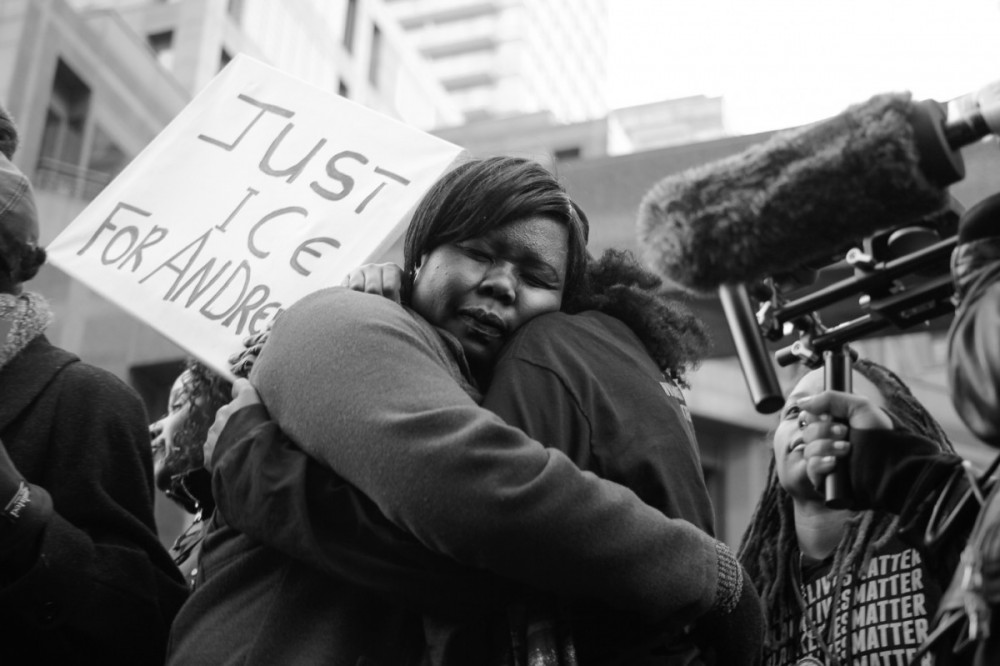
JK: I think the media has a deep, deep investment in upholding particular norms in this sort of imperialist, white supremacist, capitalist, Christian, hetero-patriarchy and so, in so many ways, the media is an agent of the state and an extension of the police force. It’s an extension of politicians and it’s extensions of government bodies and legislation and policies that are all inherently anti-Black.
The media is archaic in its narrative. I think there are a few good people we have connections to that are invested in presenting balanced narratives, that actually do believe in concepts of justice and in accountability from not just the police but from politicians and our governmental bodies. But they are few and far between. So the role that we’ve had to play in mobilizing each other and people to create alternative narratives has been instrumental. And it is now more possible than ever with things like social media and with folks who film things on the ground every day. We’ve really had to build our own narratives, because the media has failed time and time again to be balanced.
But when mainstream media is around, it is very, very unlikely that police will brutalize us in those moments, and that really is the only protection that the media has allowed for. But we have to also note, as we’ve seen so many times, that it is not invested in our protection, it is invested in scandal. So we have to know that that protection comes at a very heft price.
Well, thanks for talking with independent media!
LN: Yeah, we see you holding us down.


